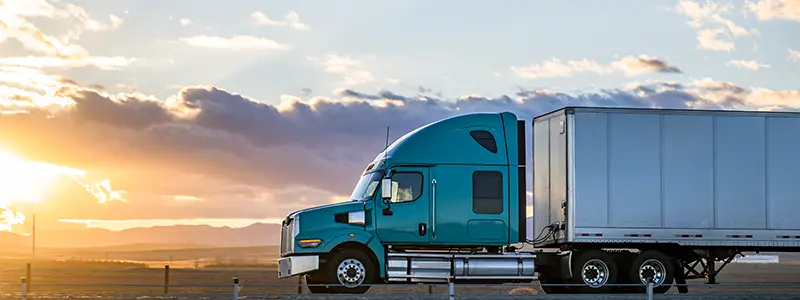1. Economy
Concern over the state of the nation’s Economy rose four spots this year to be the top-ranked industry issue. From inflation, rising interest rates and diesel prices to reduced freight demand and declining rates, the Economy impacts motor carriers and drivers alike, showing up as a Top 10 concern for both (Table 3). The outlook for the remainder of the year remains uncertain given challenges like the impact on consumer spending from resumption of student loan payments and the temporary stop-gap funding of the federal government, set to expire in November.10
Proposed Strategies (in rank order):
a) Identify and promote reforming / repealing ineffective and burdensome regulations that increase industry costs without providing benefits. 48.6 percent of respondents believe that the best strategy for offsetting the negative impacts of the Economy is to reduce the industry’s regulatory burden. For example, the California Air Resources Board (CARB) Advanced Clean Truck rule requires medium- and heavy-duty vehicle manufacturers to sell zero-emission trucks (ZET) as an increasing portion of total sales within California from 2024 to 2035.11 However, research has shown that extremely expensive battery-electric trucks only reduce lifecycle CO2 emissions by 30 percent over diesel engines.12 That same analysis found that increased vehicle weight from the batteries would mean fleets would need to purchase more vehicles to haul the same amount of freight – raising costs while reducing any environmental benefits.
b) Quantify the impact of increasing trucking operational costs on the supply chain and nation’s economy. Trucking is often considered a bellwether of the broader economy and as the industry’s costs increase, the impacts are felt throughout the supply chain and by consumers. Quantifying these impacts is the preferred strategy of 34.8 percent of respondents. The industry experienced record-high costs in 2022 – a 21.3 percent increase in operational costs over the previous year – and the expectation is that the cost to operate a truck will remain above $2.00 per mile for the foreseeable future.
c) Advocate for reshoring and near-shoring of equipment and parts manufacturing to reduce reliance on international supply chains. Nearly 15 percent of respondents believe that the best approach for mitigating economic concerns is to reduce the industry’s reliance on sourcing equipment and parts manufacturing outside of North America.14 Industry support of the CHIPS Act of 2022 reflects this strategy to bring critical component manufacturing back to the U.S. through targeted federal investment.15
2. Truck Parking
The lack of available Truck Parking first appeared as a Top 10 overall concern in 2012 and has been a top-five issue since 2015, reaching its highest ranking this year as the number two concern overall. However, this issue had been identified as an industry concern as far back as 1992 when the U.S. Senate directed the Federal Highway Administration (FHWA) to study the adequacy of truck parking at public rest areas and private truck stops.16 Now several decades later, the signing of the Infrastructure Investment and Jobs Act (IIJA) in 2021 has led to an increased focus on expanding truck parking capacity, including a recent announcement by the U.S. DOT of $80 million in High Priority Grant Awards, including a 65 percent increase in funding for truck parking projects over the previous year.17
Proposed Strategies (in rank order):
a) Advocate for a dedicated federal funding program to increase truck parking capacity at freight-critical locations. Nearly 50 percent of respondents believe that dedicated federal funding for truck parking is the best solution for addressing this perennial industry challenge. The bipartisan Truck Parking Safety Improvement Act, introduced earlier this year, would provide $755 million to expand parking capacity across the U.S. and was heralded by the industry as an important step to alleviating a parking shortage that is estimated at just one parking spot for every 11 truck drivers.18
b) Encourage local and regional governments to reduce the regulatory burdens limiting the construction and expansion of truck parking facilities. Despite a growing number of private-sector parking products and services, adding truck parking capacity – particularly in and around major metropolitan areas – continues to be hindered by local zoning regulations that limit or outright ban truck parking.19 But there are some positive advancements in providing truck parking in major metropolitan areas. The New York City Council recently passed a bill to create off-street parking for large trucks.20 Encouraging the removal of regulatory burdens and potentially identifying new truck parking at the local and regional level is the preferred strategy of 34.6 percent of respondents.
c) Research the relationship between truck parking availability and highway safety. Fatal crashes this year in Texas and Illinois have once again underscored the dangerous situation truck and car drivers face when truck drivers are forced to park on the side of the road when no available safe parking is available.21 Research to quantify this safety relationship is the preferred strategy of 14.9 percent of respondents.
3. Fuel Prices
Last year’s number one concern, Fuel Prices, moved down two spots this year to a third-place overall ranking. ATRI’s 2023 Operational Costs of Trucking found year-over- year increases in the fuel cost per mile of 53.7 percent, with fuel representing 28 percent of the total operating costs – the highest since 2014.22 According to the Energy Information Administration (EIA), the average monthly diesel price per gallon had been dropping through the first half of this year over 2022 highs due to the slowing economy, but starting in July 2023, had begun increasing again due to OPEC production cuts. The September 2023 average price per gallon was $4.563.23 High diesel prices are especially challenging for owner-operators, who for the third year in a row have ranked fuel prices as their top concern (Table 4).
Proposed Strategies (in rank order):
a) Advocate for federal actions that help stabilize the supply of fuel and minimize price increases. A majority of respondents (68.0%) believe the best approach for addressing high fuel prices is to stabilize the nation’s fuel supply through federal action, whether that be expanding refining capacity, increasing domestic drilling, or continuing to tap the Strategic Petroleum Reserve (SPR). The latter is not without controversy and last year’s draw on the SPR took it to its lowest level since the 1980s.24 However, more recently, a limited number of domestic drilling projects have been approved.25
b) Research potential factors that may be affecting fuel availability and pricing volatility. Geopolitical events including the war in Ukraine, OPEC oil production cuts and growing tension with China and Russia continued to impact diesel prices.26 Additional volatility could be introduced this winter if the weather is harsh and demand for heating oil puts additional pressures on supply. As such, 23.5 percent of respondents believe that more research is needed to fully understand the interplay of factors affecting the nation’s fuel supply.
c) Quantify the impact of alternative and renewable fuel sources on motor carrier operational costs. Fewer than 10 percent of respondents (6.3%) believe the best approach for addressing high fuel costs is to quantify the impact of other fuel sources, including alternative and renewable fuels, on the industry’s overall costs. Part of the challenge in doing so is the limited penetration of these alternate fuel sources in the combination vehicle market. ATRI’s latest Operational Costs of Trucking found that just 8.2 percent of respondent fleets had one or more Class 8 truck-tractor powered by an alternative fuel source, with compressed natural gas (CNG) at the top of the list
4. Driver Shortage
The Driver Shortage dropped in rank for the second year, falling to number four overall. The estimates for the shortage this year were down from previous years, with an estimated 64,000 drivers needed.28 When freight demand is soft as it was in late 2022 and into this year, fleets will slow driver hiring and, in some cases, lay drivers off. The last time that the Driver Shortage experienced a similar drop in ranking in this survey was during the Great Recession (2008-2009), reaching its lowest rank of number six overall in 2009.29
Proposed Strategies (in rank order):
a) Research the primary factors behind drivers leaving trucking careers. Research to understand why drivers leave trucking careers is the preferred strategy of 37.9 percent of respondents. While the industry tracks annualized turnover rates, what is less clear is what portion of those drivers move to other carriers and what portion leave the industry altogether. ATRI recently commenced research that will examine why women drivers leave the industry as part of a broader study to understand the challenges faced by women drivers and how to overcome those challenges.30
b) Advocate for expanding interstate CDL eligibility to 18-20-year-old drivers. The Drive Safe Act, signed into law as part of the IIJA in November 2021, included a new national pilot test allowing up to 3,000 18- to 20-year-olds to operate trucks in interstate freight commerce. However, the FMCSA Safe Driver Apprenticeship Program (SDAP) has struggled to generate participation, in part due to stringent requirements including having a registered apprenticeship program and deploying numerous safety technologies.31 Despite the SDAP’s uncertain future, 32.0 percent of respondents believe that the industry should continue to advocate for expanded CDL eligibility for younger drivers.
c) Support an industry-funded outreach program to improve the trucking industry’s image. Over 28 percent of respondents believe that the best strategy for recruiting more drivers is to improve the industry’s image. Public polling commissioned by Trucking Moves America Forward did find that the industry’s image had improved in
5. Driver Compensation
Driver Compensation dropped one position this year to the number five concern overall. Data from ATRI’s 2023 Operational Costs of Trucking research showed that driver wages increased 15.5 percent over the previous year, with the combined driver wage and benefit figure ($0.907 per mile) achieving a record-high since the Operational Costs research first launched in 2008.33 However, the current Ops Costs report uses 2022 data and it is very possible that the softer freight demand this year negatively impacted wages, thus pushing Compensation back to the top of the drivers’ list of concerns (Table 3).
Proposed Strategies (in rank order):
a) Quantify the economic impact of compensating drivers for all hours worked, including detention time and congestion delays. Compensating drivers for all hours worked has been a perennial write-in strategy by driver respondents for the past five years, and 46.0 percent of respondents believe quantifying the economic impact of doing so is the preferred approach to Driver Compensation. ATRI’s 2019 detention research examined longitudinal data from 2014 and 2018 and found that drivers reported a 27.4 percent increase in delays of six or more hours.34 Separate ATRI research found that the annualized 1.2 billion hours of lost productivity due to congestion were the equivalent of 425,000 truck drivers sitting idle for a year.35 Given these significant impacts on driver productivity, it is understandable that drivers in particular would advocate for being compensated for all on-duty hours.
b) Analyze truck driver compensation models and their relationship to driver satisfaction and productivity. Beyond raising pay, fleets are exploring other models to compensate drivers. ATRI research identified a variety of pay models beyond traditional pay-by-mile including pay-per-load, percentage of bill and guaranteed salaries.36 Better understanding of the relationship between these varied pay models and driver satisfaction is the preferred strategy of 32.0 percent of respondents.
c) Research and prioritize the effectiveness of carrier programs that financially incentivize drivers for retention, safety performance, and fuel economy. ATRI’s
6. Lawsuit Abuse Reform
Lawsuit Abuse Reform, also described as tort reform, is once again climbing in rank as a top industry concern, this year ranking sixth overall and third among motor carriers (Table 3). Lawsuit Abuse Reform is one of three issues, along with Fuel Costs and Driver Shortage, that were ranked as Top 10 concerns in the inaugural Top Industry Issues Survey in 2005 and remain today. The need for Lawsuit Abuse Reform is closely tied to another top industry concern, Insurance Cost / Availability (#6 on Motor Carrier list, Table 3), as the frequency and size of verdicts and settlements against the industry have grown in recent years.39 This has led to increased insurance premiums for all carriers, regardless of safety performance and crash involvement.
Proposed Strategies (in rank order):
a) Promote state-level reform to cap damages paid to plaintiffs in truck-involved crashes. Seeking reform at the state-level to put limits on the amounts that can be awarded to plaintiffs for non-economic damages is the preferred strategy of the majority (64.8%) of respondents. Iowa recently passed such legislation, limiting non-economic damages – sometimes referred to as punitive damages – to $5 million per plaintiff.40
b) Advocate for elimination of “phantom” damages. Phantom damages are the delta between medical costs that a defendant is billed for versus the actual medical costs paid. These inflated amounts can create a non-compensatory windfall for the plaintiff and plaintiff’s attorney. Recent legislative wins in Florida and Montana specifically addressed phantom damages and other states are looking to pursue similar legislation.41 One in five respondents believe that elimination of phantom damages is the top strategy for Lawsuit Abuse Reform.
c) Quantify the impact of third-party litigation financing on trial outcomes. The use of third-party litigation financing is growing in the U.S., and it is often used to provide capital for plaintiffs’ cases to cover things like focus groups, expert witnesses and other litigation tools. The financing is typically provided on a contingency basis, with repayment generating from a judgement or out-of-court settlement favoring the plaintiff. As described in ATRI’s nuclear verdict research, the growth in third-party litigation financing is leading to increased litigation and frivolous lawsuits being pursued in hopes
7. Driver Distraction
Driver Distraction first appeared in the Top 10 list in 2014, ranking 10th overall. It rose to a peak of 7th overall concern in 2018 and then did not make the Top 10 list again until this year. The National Highway Traffic Safety Administration (NHTSA) reports that 3,522 people were killed in traffic crashes in 2021 that were found to be distraction- affected crashes, and 410 of those individuals died in crashes involving at least one driver who was engaged in cell-phone-related activities.44 Among law enforcement respondents in this year’s survey, Driver Distraction was the top concern (Table 5).
Proposed Strategies (in rank order):
a) Encourage harsher penalties and more aggressive enforcement of distracted driving laws for all road users. The top strategy among respondents (37.8%) for reducing distracted driving is to utilize more aggressive enforcement and harsher penalties to deter distracted driving. While the penalties for truck drivers using a handheld device while driving are significant, in some states, car drivers can get by with a $25 ticket for using a cellphone while driving.45
b) Advocate for national standards for distracted driving laws for all motorists. The trucking industry has one national standard that all CDL drivers are held to for use of a handheld device while driving.46 However, that is not the case for car drivers who are subject to different laws and associated penalties in all 50 states. Having one national standard for all road users is the preferred strategy of 30.9 percent of respondents.
c) Quantify the role of car driver distraction in car-truck crashes. The preferred strategy of 29.2 percent of respondents to address distracted driving is to better understand the role of car driver distraction in car-truck crashes. Truck drivers report that they regularly see car drivers engaging in unsafe behaviors, particularly driving distracted.47 The consequences of that distracted driving can be severe when it results in a crash. NHTSA’s proposed rule for automatic emergency braking (AEB) for cars and light trucks
8. Driver Retention
Likely the result of the softer freight market starting in latter 2022, Driver Retention dropped another spot this year to the number 8th overall concern. Even among motor carrier respondents, Driver Retention dropped two spots this year to their number four concern (Table 3). While Driver Shortage, Driver Compensation and Driver Retention are all related workforce issues, the strategies to address each are distinct. One strategy to encourage retention is the use of compensation in the form of retention bonuses. ATRI’s 2023 Operational Costs of Trucking found that the average retention bonus was $1,272, up nearly 90 percent over the past four years.49
Proposed Strategies (in rank order):
a) Research and promote the retention strategies of carriers that continuously experience low driver turnover. A plurality of respondents (47.9%) believe that emulating the retention strategies of fleets with low driver turnover is the best approach to retaining drivers. The smallest fleets in ATRI’s Operational Costs of Trucking – those with fewer than 26 trucks – had the lowest turnover rates (<30%), indicating that while their pay may not match that of larger fleets, they are employing workforce strategies that better retain their drivers.50
b) Evaluate the impact of truck driver benefits, including health insurance and retirement benefits, on driver retention. ATRI’s 2023 Operational Costs of Trucking analysis found that 80 percent or more of participating motor carriers provided a suite of benefits to their drivers including health insurance (97%), paid vacation (91%), 401k (85%) and dental insurance (81%). In addition, the percentage of fleets providing health, paid vacation and 401k increased in this year’s analysis, corroborating that fleets believe this is an important component in retaining drivers. Understanding the impact of these benefit offerings on retention was the preferred strategy of 32.3 percent of respondents.
c) Conduct market research on truck driver experiences and perspectives mapped to truck driver tenure data. Understanding not only how drivers feel about their job but also understanding the differences in those perspectives between new entrant and veteran drivers is the preferred strategy of 18 percent of respondents. Driver surveys, including this annual TII survey, routinely point to the factors that drivers consider important in their daily work, and can offer a roadmap of what carriers should be focused on to improve driver retention.51
9. Detention / Delay at Customer Facilities
Detention / Delay at Customer Facilities experienced the largest drop in ranking among Top 10 issues this year, down to number nine overall from number six in the 2022 survey. Like several other issues in this year’s Top 10, this drop in ranking may be a function of softened freight demand which can reduce the time spent loading and unloading freight. However, this temporary lessening of detention does not mitigate the fact that this is a long-standing, perennial challenge for the supply chain. In recognition of the need to identify solutions, ATRI’s Research Advisory Committee prioritized detention research for 2023.52
Proposed Strategies (in rank order):
a) Advocate for guaranteed detention pay after a driver is detained for one hour or more at customer facilities. The majority of respondents (65.4%) believe that the best solution for detention is to guarantee driver pay when waiting beyond one hour. ATRI’s 2019 detention research found that drivers were often detained six hours or more when servicing customers, and that excessive delays were on the rise, resulting in significant impacts to drivers’ compensation when unproductive time goes unpaid.53
b) Support legislation to require customer facilities to provide restroom access to drivers. Washington State was the first to introduce legislation to provide restroom access for drivers and nearly one in five respondents (17.3%) believe this is a top priority strategy for addressing detention.54 Earlier this year, federal legislation was introduced to guarantee restroom access for truck drivers, and it was strongly supported by industry groups.55
c) Educate customers on the need to provide safe, onsite truck parking when drivers are detained beyond two hours. Drivers being forced to seek out offsite truck parking when being detained at a customer’s facility can put drivers in unsafe conditions that can result in harm to the driver.56 Educating customers on why they need to provide safe parking for drivers on their property is the preferred strategy of 15.9 percent of respondents.
52 ATRI, “ATRI Releases New Research Priorities for 2023” (May 8, 2023), https://truckingresearch.org/2023/05/atri-
10. Zero-Emission Vehicles
Zero-Emission Vehicles (ZEV) is on the Top 10 list for the first time this year, and its emergence as a top industry concern is not a surprise given the new focus of state and federal agencies on very aggressive timelines for transitioning the nation’s vehicle fleet away from internal combustion engines.57 The impacts for the trucking industry are particularly challenging given the extremely high costs of ZEV and the lack of charging infrastructure nationwide.58
Proposed Strategies (in rank order):
a) Quantify the charging infrastructure requirements and subsequent supply chain cost increases of zero-emission truck mandates. ATRI research documented that full electrification of the U.S. vehicle fleet would require over 40 percent of the country’s existing electricity generation and in some states, like California, that percentage would near 60 percent.59 That same research found that equipping the nation’s truck parking spaces with chargers would require an initial deployment cost topping $35 billion. Understanding these impacts and their associated cost increases across the supply chain is the preferred strategy of 53.8 percent of respondents.
b) Assess the potential of a Federal Excise Tax (FET) repeal for encouraging fleet investment in newer, more energy-efficient equipment. 22.7 percent of respondents believe that the best approach for addressing Zero-Emission Vehicles is to understand how a repeal of the FET would impact the industry’s environmental footprint as fleets invested in newer equipment. At 12 percent, the 105-year-old FET is among the highest percentage of any excise tax currently levied on a product.60
c) Research the impacts of battery-electric vehicles on transportation infrastructure, crash response and first responder safety. Battery electric vehicles are heavier than their internal combustion engine counterparts and as such, will have different impacts on the nation’s highways and in crash severity.61 Additionally, the challenges of extinguishing lithium-ion battery fires has generated a significant amount of concern







